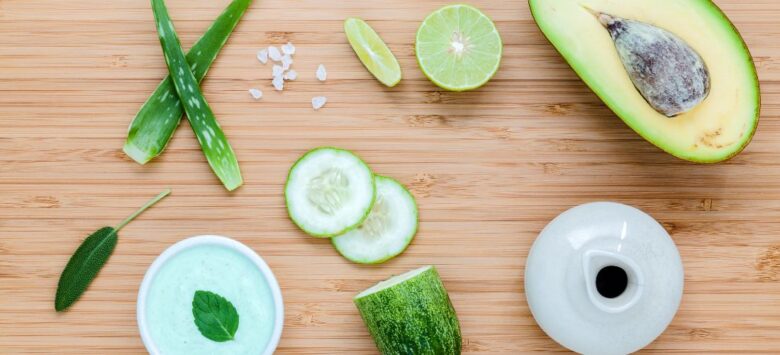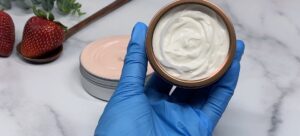Introduction
Stretch marks, or striae, are a common concern for many individuals experiencing rapid skin changes due to pregnancy, puberty, or weight fluctuations. While stretch mark creams are widely available, not all are created equal. Understanding the ingredients in these creams can help you choose products that effectively improve skin texture and reduce the visibility of stretch marks. In this article, we’ll break down the key ingredients to look for and how they work to promote healthier, more elastic skin.
Why Ingredients Matter
The effectiveness of a stretch mark cream largely depends on its formulation. Active ingredients target specific skin concerns, such as hydration, elasticity, and collagen production, while supporting ingredients ensure the cream is safe and pleasant to use.
Key Benefits of Stretch Mark Cream Ingredients:
- Hydration: Keeps the skin supple and prevents further tearing.
- Collagen Boosting: Supports skin regeneration and elasticity.
- Repair and Healing: Fades the appearance of existing stretch marks.
- Protection: Shields the skin from further damage.
Top Ingredients to Look For in Stretch Mark Creams
1. Retinoids (Vitamin A Derivatives)
- How It Works: Retinoids stimulate skin cell turnover and collagen production, helping to repair damaged skin and reduce the appearance of stretch marks.
- Best For: Fading older, more established stretch marks.
- Caution: Avoid retinoid-based products during pregnancy and breastfeeding.
2. Hyaluronic Acid
- How It Works: This powerful humectant draws moisture into the skin, keeping it hydrated and plump. Hydrated skin is more elastic and less prone to developing stretch marks.
- Best For: Preventing stretch marks and improving skin texture.
3. Vitamin C
- How It Works: Vitamin C is a potent antioxidant that boosts collagen synthesis and brightens the skin. It can help fade the discoloration associated with stretch marks.
- Best For: Lightening dark or red stretch marks.
4. Peptides
- How It Works: Peptides are amino acids that support collagen production and strengthen the skin’s structure. They improve elasticity, making the skin more resistant to stretching.
- Best For: Preventing and reducing early-stage stretch marks.
5. Centella Asiatica
- How It Works: This plant extract has soothing and healing properties. It promotes collagen production and reduces inflammation, helping to repair damaged skin.
- Best For: Sensitive skin and preventing stretch marks during pregnancy.
6. Shea Butter and Cocoa Butter
- How It Works: These natural moisturizers create a protective barrier on the skin, locking in hydration and improving elasticity. They also soothe dry, itchy skin.
- Best For: Daily hydration and preventing stretch marks.
7. Allantoin
- How It Works: Allantoin promotes cell regeneration and soothes irritated skin. It also helps improve the skin’s ability to retain moisture.
- Best For: Calming sensitive or inflamed skin.
8. Collagen and Elastin
- How It Works: These proteins are vital for skin firmness and elasticity. While topical application may not penetrate deeply, creams with collagen-boosting ingredients can enhance the skin’s surface texture.
- Best For: Improving skin firmness and texture.
9. Caffeine
- How It Works: Caffeine increases blood flow and temporarily tightens the skin, reducing the visibility of stretch marks.
- Best For: Immediate but temporary improvement in skin appearance.
10. Natural Oils (e.g., Rosehip, Argan, Jojoba)
- How It Works: Rich in vitamins and fatty acids, natural oils nourish and hydrate the skin, supporting elasticity and repair.
- Best For: Preventing stretch marks and soothing dry, itchy skin.
Ingredients to Avoid
While most stretch mark creams are safe, some ingredients may cause irritation or are not recommended during pregnancy:
- Retinoids: Should be avoided during pregnancy due to potential risks to the baby.
- Harsh Fragrances and Parabens: Can irritate sensitive skin.
- Synthetic Dyes: Add no benefit and may trigger allergic reactions.
Tips for Choosing the Right Stretch Mark Cream
1. Consider Your Skin Type
- For sensitive skin, look for hypoallergenic formulas with soothing ingredients like Centella Asiatica and shea butter.
- For dry skin, choose products with hydrating ingredients like hyaluronic acid and cocoa butter.
2. Check the Label
- Ensure the cream contains clinically proven ingredients like Vitamin C or peptides.
- Avoid products with unnecessary fillers or harsh chemicals.
3. Prioritize Your Needs
- If you want to prevent stretch marks, focus on hydration and elasticity-boosting ingredients.
- To reduce existing stretch marks, look for creams with retinoids, Vitamin C, or peptides.
4. Read Reviews
Customer reviews can provide insights into how well a product works for different skin types and concerns.
5. Test Before Committing
Perform a patch test to ensure the product doesn’t cause irritation or an allergic reaction.
FAQs About Stretch Mark Cream Ingredients
Can stretch mark creams prevent stretch marks completely?
While no cream can guarantee prevention, consistent use of products with the right ingredients can significantly reduce the likelihood of developing stretch marks.
Are natural ingredients better than synthetic ones?
Both natural and synthetic ingredients can be effective, but natural oils and butters are often gentler and better suited for sensitive skin.
How long does it take to see results?
Results vary depending on the product and severity of the stretch marks. Visible improvements often appear after 4–8 weeks of consistent use.
Conclusion
Choosing the right stretch mark cream starts with understanding its ingredients. Look for proven components like retinoids, hyaluronic acid, Vitamin C, and natural oils that hydrate, promote collagen production, and support skin elasticity. By selecting a product tailored to your skin’s needs and using it consistently, you can effectively reduce the appearance of stretch marks and improve your skin’s overall health.




